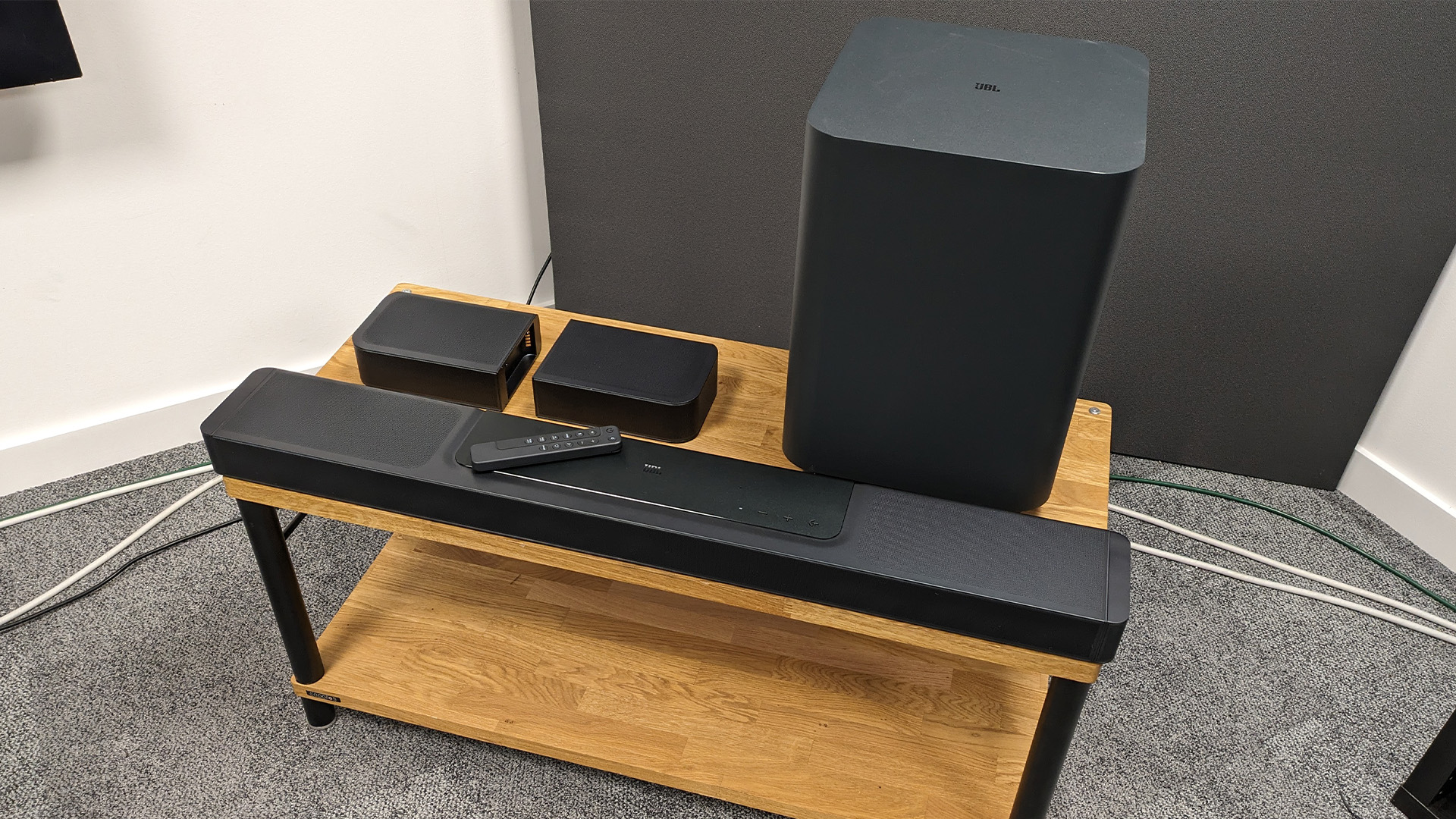
A soundbar package is a great option for someone who wants serious movie sound but doesn't want the fuss and expense of a system comprising an AVR plus speakers. Comparatively simple, sleek and affordable, a soundbar package usually consists of a bar, a subwoofer and two wireless surround speakers, and it's in these surrounds that we see the most variation.
The approach taken by the Samsung Q990C is the most common, with two mains-powered wireless speakers handling surround duties. Then there's the Yamaha True X approach, which features smaller, battery-powered surround speakers.
The subject of today's review, the JBL Bar 1300, takes that latter approach a step further, with the ends of the bar turning into surround speakers (or even standalone Bluetooth speakers) when detached. It's a super-flexible solution, but how does it sound?
Price
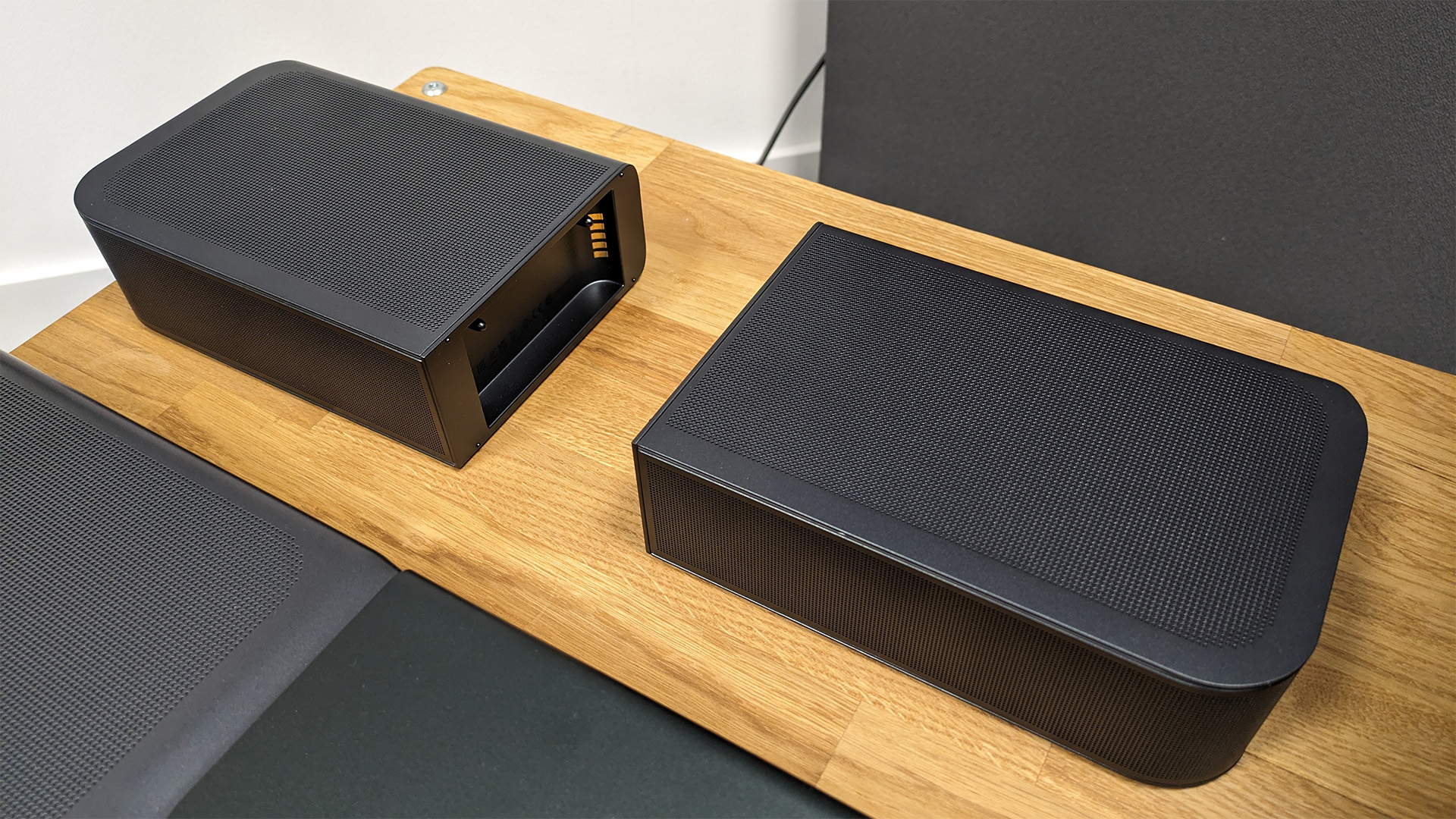
This system currently costs around £1250 / $1400 / AU$1700. By comparison, the aforementioned Samsung Q990C, which has been discontinued, can be picked up for £999 / £999 / AU$999 while the Yamaha True X is £1099 / $999 / AU$1599. For similar money to this JBL set, Sonos will sell you an 'Immersive Set with Beam’, which includes the Beam (Gen 2) soundbar, the Sub Mini, and two Era 100 speakers to be used as surrounds.
If it's a standalone soundbar rather than a package you're after, this budget would cover the Sennheiser Ambeo Soundbar Plus and the Sony HT-A7000. The Sennheiser costs roughly £1299 / £1499 / AU$2159, while the Sony is priced at £999 / $1199 / AU$1599. Sony recently announced its new Theatre Bar 9 which will replace the A7000, so we anticipate further discounts to come. There’s also the ubiquitous Sonos Arc which costs £760 / $899 / AU$1499.
It's worth noting that the US version of the JBL Bar 1300 is called the '1300x' and comes with a larger subwoofer, so this review is only partly applicable to that model.
Design & build
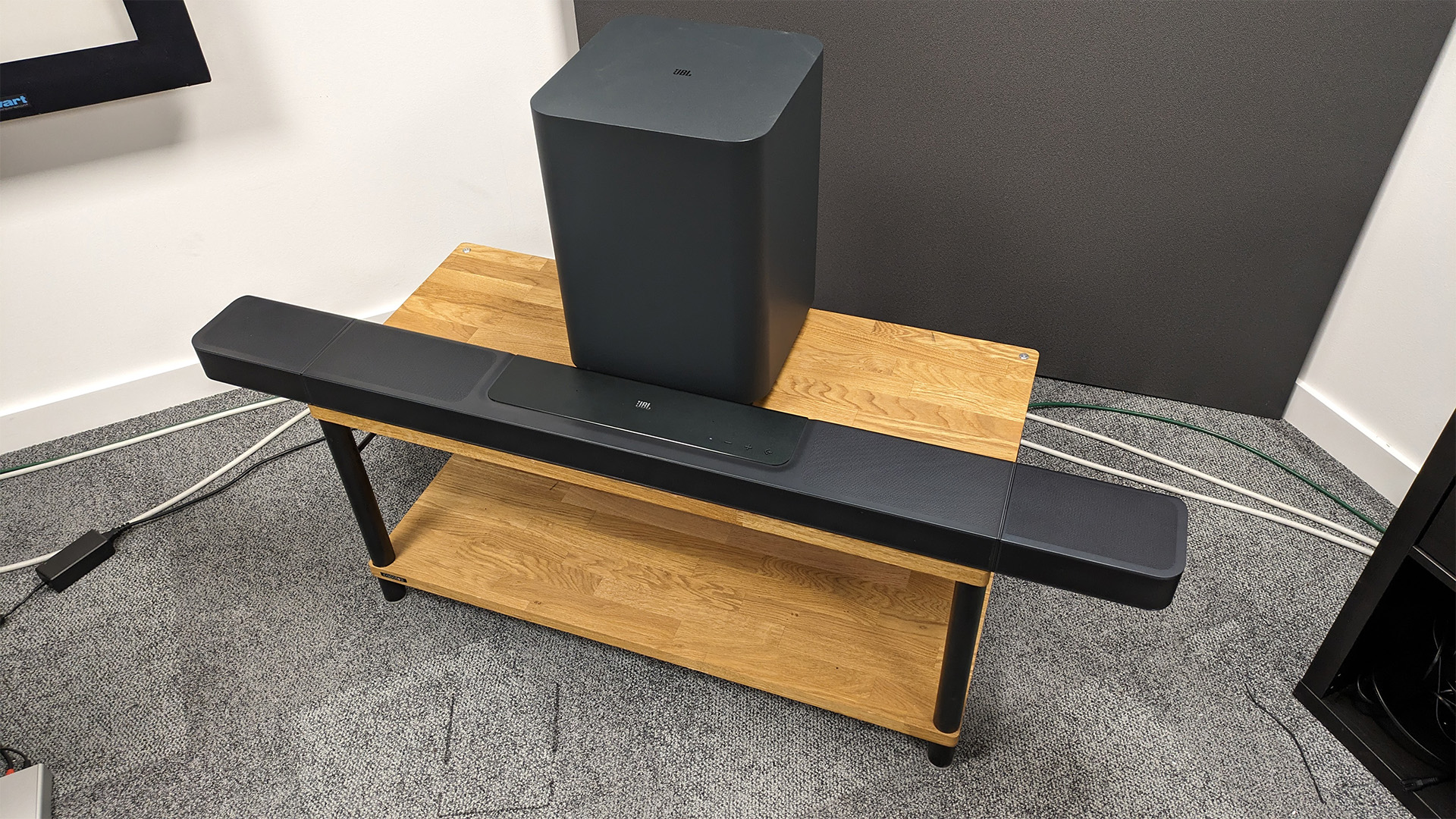
The Bar 1300 measures just under 140cm in width with the rear speakers attached on either end – that’s a lot of bar; wider than of all the other soundbars we've mentioned. However, with the rear speakers detached, the main soundbar section measures just 100cm, around the same as the smaller Yamaha True X bar, which fits neatly on our TV stand.
The JBL bar and surrounds sport a matching exterior aesthetic, and while we think there are more attractive bars out there, it’s a fairly minimal design with tasteful matte surfaces that don’t distract from the on-screen action. Alongside visual and external similarities, the main bar and rear speakers share the same types of drivers. The main soundbar houses six 46 x 90mm racetrack drivers, five 20mm tweeters, and four 70mm upfiring full-range drivers.
The rear speakers feature three drivers of the same design as those included in the main bar, along with two rounded rectangle passive radiators. It is noteworthy to see the surround speakers sharing the same types of drivers as the main soundbar. Having matching drivers across the different components should increase the potential for an even and seamless surround experience. However, considering the rears can be attached to the main bar, perhaps it isn’t all too surprising that the system has this uniformity.
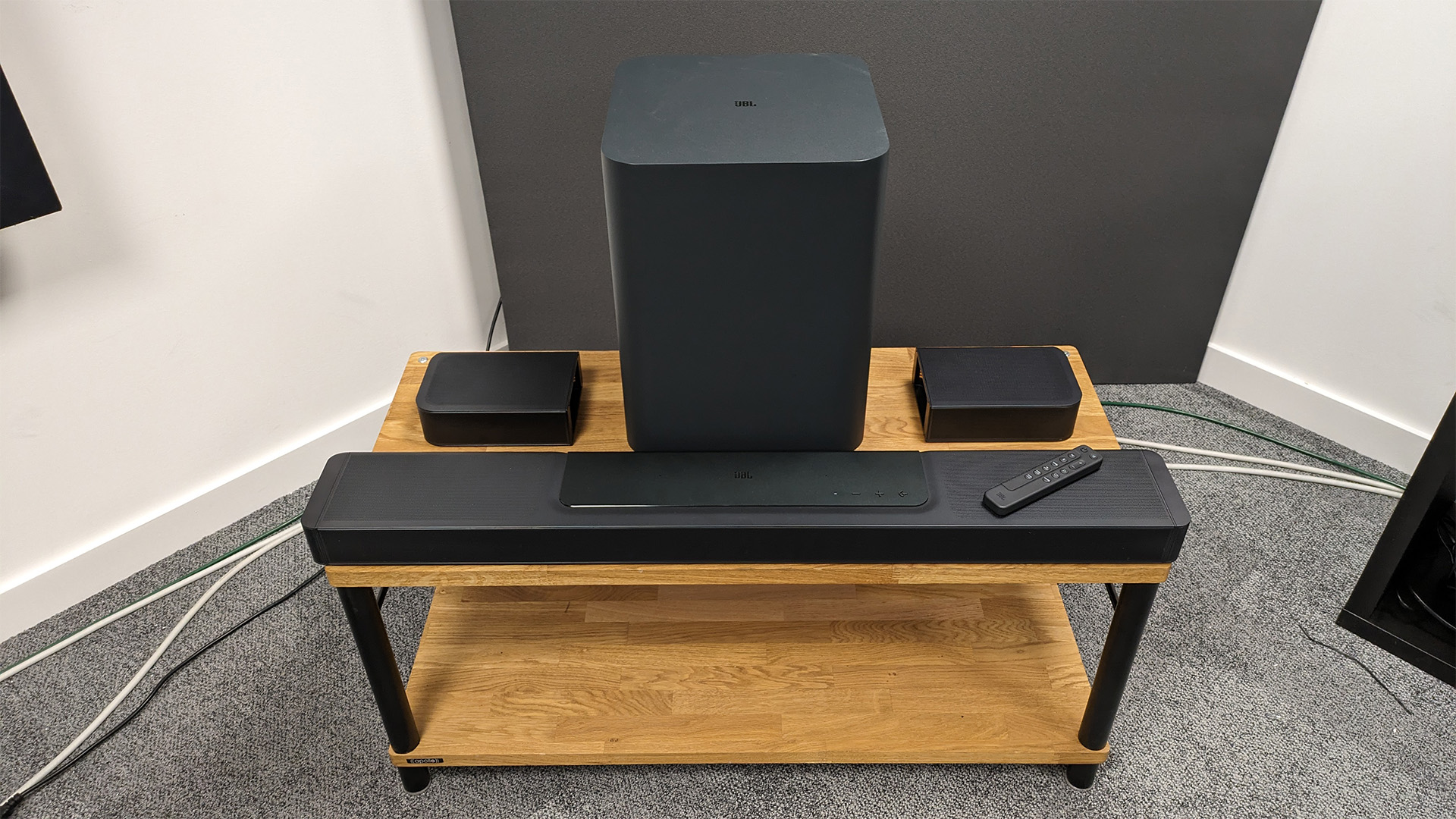
Connectivity HDMI out ( with eARC/ARC), 3x HDMI input, optical, wi-fi, Bluetooth 5.0 (soundbar), Bluetooth 5.2 (rear speakers)
Format support Dolby Atmos, DTS:X
Streaming Spotify Connect, Tidal Connect, Airplay 2, Chromecast
Voice control Amazon Alexa,
Soundbar dimensions (hwd) 6 x 100 x 14cm
Soundbar weight 4.3kg
Surround speaker dimensions (hwd) 6 x 20 x 14cm
Surround speaker weight 1.25kg
Subwoofer dimensions (hwd) 44 x 31 x 31cm
Subwoofer weight 10kg
We find the configuration of the drivers in the rear speakers to be slightly curious, however. Of the three drivers, one is firing towards the listener, one is aiming upwards, and one is firing behind where the listener is seated. The lack of a driver firing along the side wall and back towards the soundbar has us wondering if this configuration might impact the system’s sense of width.
The subwoofer included with the package is a rounded cuboid shape and stands 44cm tall and around 31cm wide and deep, with four small feet and one downwards-firing 10-inch driver underneath. It’s a solid unit that matches the look and feel of the accompanying bar and rears.
Everything in the system feels solid and well-made, with the rear speakers magnetically attaching simply and securely to the main bar. With everything joined, there’s no sign of either end being at risk of coming loose or falling apart – and it takes a fair pull to get them to detach again. The surrounds have a quoted battery life of 12 hours, which is on par with similar rechargeable speakers. The customisable nature of the system is quite convenient; if the surrounds run out of battery or you would prefer to listen to them in unison with the main bar, reattaching them is quick and simple. However, many users may prefer a surround speaker that stays in position permanently; having to detach the speakers for movie night and then reattach them whenever the batteries need recharging may feel like a faff.
The main soundbar features a simple display off to the right of its face, which shows volume levels, audio formats, and input sources. Around the back, there’s a neat row of inputs and outputs. There are no awkward right-angle bends to contend with here, everything is easy to access and hook up. The Bar 1300 offers HDMI eARC connectivity and an optical audio output. You can also connect wirelessly to the whole system via wi-fi, or use Bluetooth to connect to just a standalone rear speaker. There are also three additional HDMI inputs that can handle Dolby Vision and HDR10 signals. Unfortunately, these sockets can't handle cutting-edge gaming features such as 4K/120Hz, so hardcore gamers will still want to connect their PS5, Xbox Series X or gaming PC directly to their TV.
Features
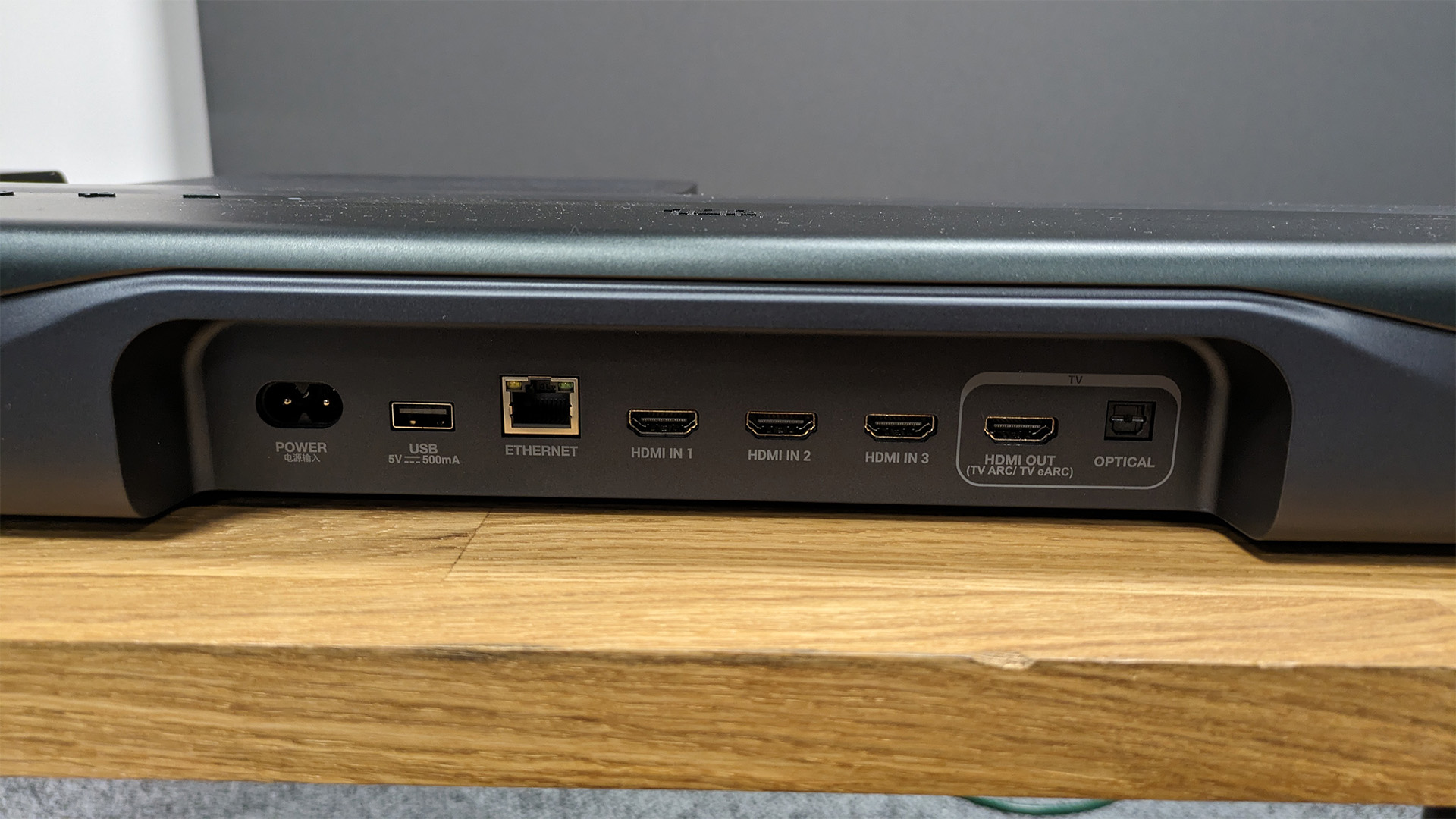
The soundbar features a simple three buttons on its surface, controlling volume and input source. The rest of the system’s controls can be adjusted using the included remote or the JBL One app, and unusually for a soundbar, the remote does pretty much everything we need. The display on the bar is small, however it responds quickly to any changes to settings.
JBL is so confident in its remote design that the app features a visualiser displaying a virtual version of the remote on your screen. The app includes a few optional extras absent from the remote, such as a three-band equaliser and an audio sync control, but we do not find ourselves needing to use either and usually just go with the remote to make any changes.
Overall, the bar is quite light on features and instead focuses on offering a simple, streamlined experience. There are no sound modes to choose from, and no commonly found optional extras such as voice enhancement or a night mode. While we appreciate the streamlined, simplified approach to this system, the lack of some of these features may be an issue for some users.
Setting up the system is quick, and involves a few optional – but highly recommended – steps, such as connecting to wi-fi and two-step room calibration. We recommend using the app over the remote for the calibration process as it includes a handy visualisation of where to place the rear speakers during both stages of calibration. Completing both steps only takes a few minutes in total. Interestingly, the subwoofer is not involved in calibration, as the process instead seems to focus on trying to make sure the bar and rears perform in harmony.
In terms of streaming, the Bar 1300 supports Spotify Connect, Tidal, Qobuz, Amazon Music, Napster and a range of internet radio stations. There’s also AirPlay 2, Chromecast support and Amazon Alexa voice control capabilities.
For extra fine-tuning, the remote and app include controls for separately adjusting the levels of the subwoofer, rear speakers and Dolby Atmos channels between a value of one and five, though we only really use the levels in the middle as either end of the scale is too extreme.
Sound
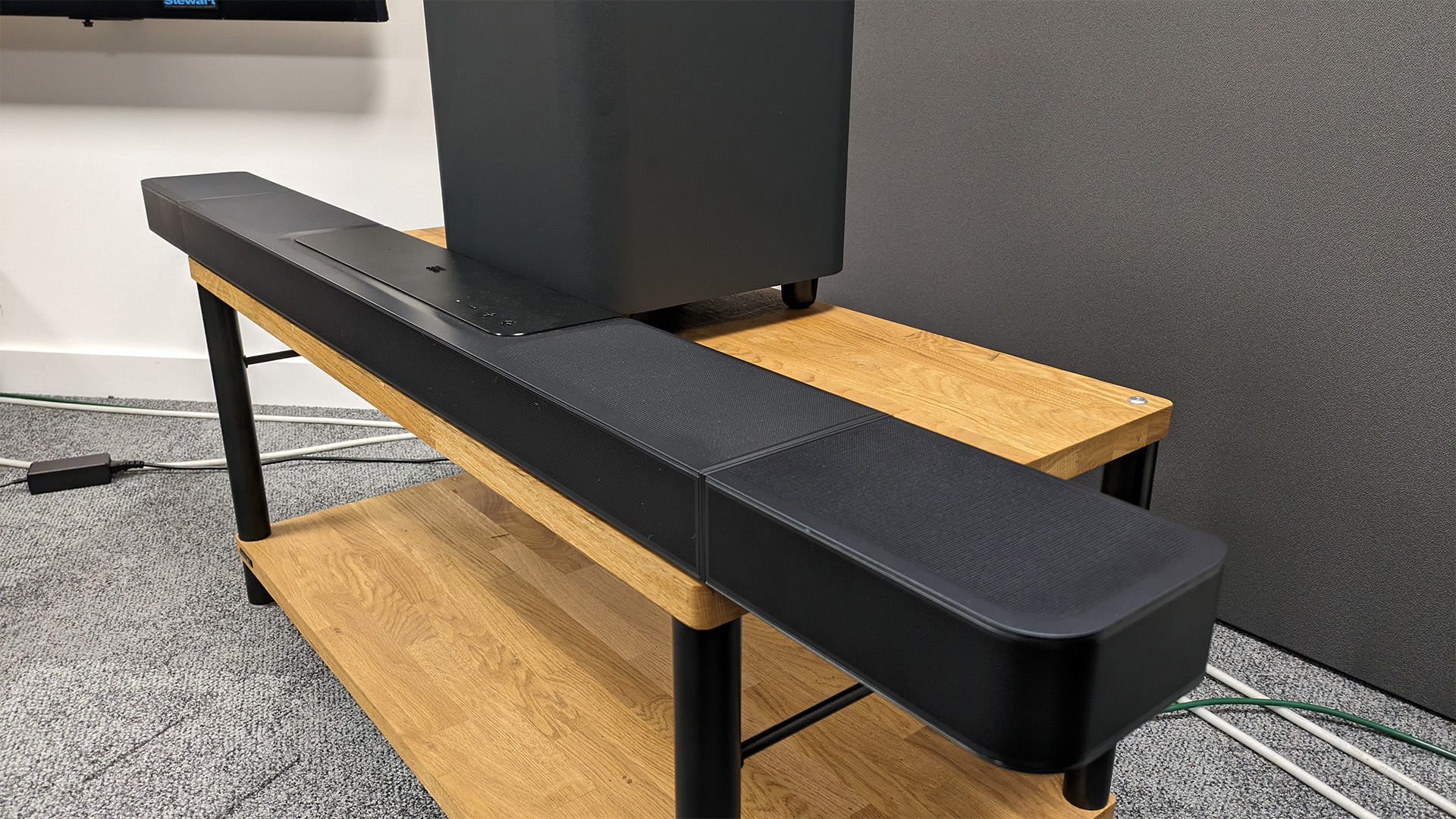
We start things off with Blade Runner 2049, which features a number of scenes that will test any system’s capabilities in several different ways. One scene involves the main protagonist answering questions from an authoritative voice coming from behind a screen/camera. The exchange increases with intensity, and the JBL conveys the speech clearly and excitingly. Voices are direct, well-projected, and feel as if they are coming from the screen. Many soundbars end up sounding flat when it comes to dialogue, so we are pleased to see the JBL draw out the emotion in the characters.
A high-pitched whistling creeps in towards the end of this scene, which often tests how well a soundbar can handle high frequencies as it intensifies in volume. The Bar 1300 handles high frequencies admirably and manages to present this whistling clearly but without harshness.
The system does well with textures and incidental sounds that give scenes their atmosphere and subtlety. A tap on the shoulder or the crinkle of a leather jacket is audible even during busier action-filled moments where there is a lot of sonic information to be processed.
We generally listen to the system with its volume set to around 20, the kind of level that’s loud enough for action to feel cinematic but shouldn’t upset the neighbours. As we turn up the volume past 20, however, we notice a slight drop in the system’s composure. Consonant and emphasised words and sounds become more abrasive and, as a result, there is a slight loss of clarity in dialogue. It shouldn’t be a huge problem in most applications, but is something to be aware of if you like your movies very loud.
Considering the configuration of each rear speaker, which does not have a side-firing driver facing towards the screen, we are impressed by how seamless and three-dimensional the soundfield is with this JBL system. Even with the rear speakers disengaged, the bar is very capable of projecting audio with a sense of spaciousness.
During another scene in Blade Runner 2049, aircraft fly overhead and percussive elements are panned across the room. The sense of horizontal width and space delivered by the JBL is impressive, though it has to be said that even on its highest Atmos setting, it doesn't offer the sort of height that other Dolby Atmos soundbars can muster. All of the Bar 1300's sound seems to be delivered in a band stretching roughly from your knees to your head – though its placement of effects within that band is very accomplished.
We stick with this scene to test out the subwoofer’s mettle as well. We find the sub integrates with the soundbar well, with no unpleasant separation between low-mid and bass frequencies. It can go loud, thanks to the dedicated five-step volume control available, however, we find any level above three is usually overkill while turning down below two feels like you’ve turned the sub off. While the sub is present and fills out the sound, it isn’t the most precise and can struggle with defined separation when tasked with handling multiple deep rhythmic elements, such as the booming drums underpinning the start of the scene.
We switch to Oppenheimer, which contains several scenes combining scored music, audio design and sound effects, all happening simultaneously. The JBL separates everything nicely, from deep rumbles to sharp crashes and everything in between. The initial impact and leading edge of a sound, such as the pop of a glass tumbler breaking, is decent but could be a little more precise to capture the full punch of the drama.
Pulling up a few albums via Spotify Connect, we give the system a spin with the rear speakers muted – without any sound modes to choose from, this is the equivalent of selecting a ‘stereo mode’. The Internet’s 2015 album Ego Death is choc-full of bass-heavy fairly stripped-back tracks. As we expect, the JBL handles these songs well, everything sounds punchy and lively. Though the sub isn’t quite as tuneful as one included in a package such as the Samsung Q990C, it’s still a commendable performer.
Boards Of Canada’s Music Has The Right To Children shows how the system can tread the line and sound up front without being in your face. The bass-synth part that opens the track ROYGBIV is deep and roaring, it’s got power behind it but still sounds warm and rich. The drums and percussion that drive the song forward are snappy and crisp, but never sound hard or too bright. It’s the same story across all the music (and movies) we end up testing with, everything sounds lively and exciting without overstating things.
One small issue we notice is the low-level presence of white noise coming from the rear surround speakers during any type of audio playback. It’s barely audible unless you are closer to the speakers, where you may notice this noise during scenes that are intended to be silent.
Verdict
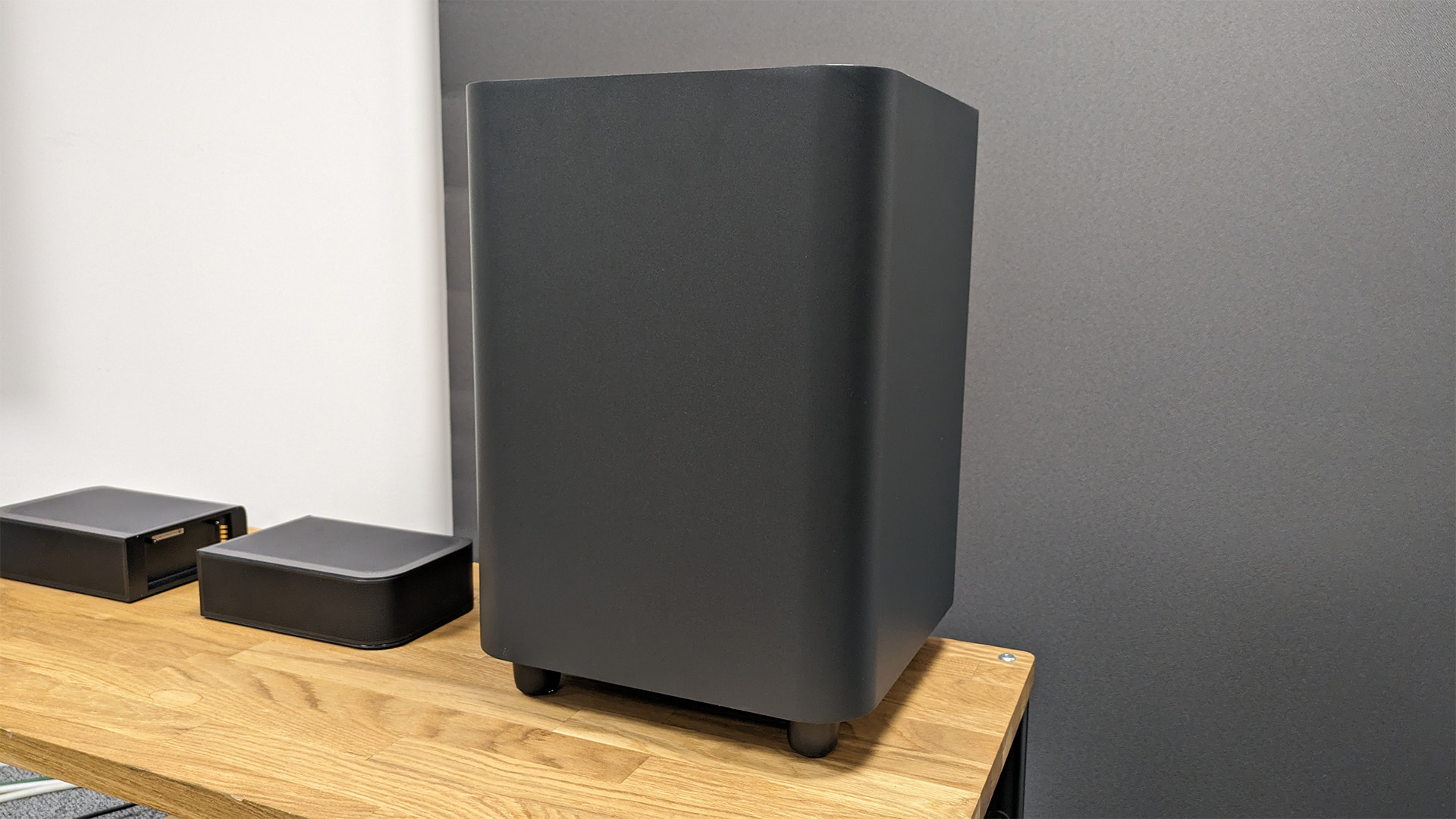
The JBL Bar 1300 offers an interesting alternative to other soundbar systems out there, providing a flexible solution to a range of possible setups. It doesn’t include many features or settings, which could be viewed as a good or bad thing, and there are systems with more rhythmically precise subwoofers. Its lack of height compared to some rivals might also bother those who are desperate to hear those trademark Atmos effects such as planes flying overhead.
All told, though, if you’re looking for a streamlined package that presents audio in a bold and up-front manner across a seamless soundfield, this JBL is worth checking out.
SCORES
- Sound 4
- Build 4
- Features 3
MORE:
Read our review of the Samsung Q990C system
Also consider the Yamaha True X System
Read our review of the Sony HT-A7000
See what we thought of the Sonos Arc







